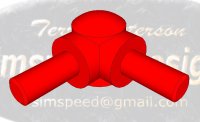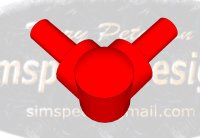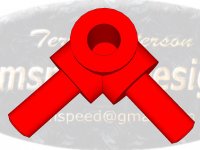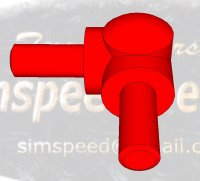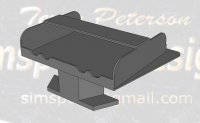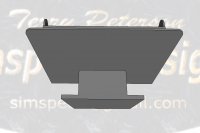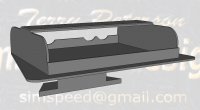Oh nice job RTRyder!
What about the weight of them?
Thanks! As for the weight, I'd say comparable to a multi built from "normal" materials, possibly a bit lighter depending on choice of material and how it's printed. I tend to over-engineer at first until I see how the pieces hold up to some hard test flights and then refine the design to parts that are as light as possible without compromising strength. I have access to a very large open field that is private property and the first flights are done there where there is no one around and no possibility of damaging someone else's property if something fails in flight. I've only had one part fail in flight in the very early days when I didn't fully understand the printing process and what to do and more importantly what not to do.
Thanks for the earlier pics of your MRs! Your comments, below, reflect important factors for all of use would-be 3D printers to consider carefully. Can you share what printer(s) and CAD sw you would recommend?
Steve
My primary printer is a highly modified Solidoodle3 that has been upgraded to an enclosed and heated build chamber (a MUST for ABS IMO...), and a more efficient platform heater topped with a layer of borosilicate glass for the flattest build surface possible, plus about a dozen other things to make it more reliable and a lot more accurate. The printer runs a version of open source Marlin firmware on a 2560 Arduino processor (same as you find on a Multiwii Pro board

) and uses Repetier Host software for controlling printer functions. As for CAD programs, there are many to choose from from free to way more $$$$ than I'll ever spend. Currently I have Autodesk 123D and Sketchup for design work which then gets exported to STL format which I then run through Netfabb to clean up any holes and other problems with the mesh, then export back into a clean STL file that gets run through Slicer to produce gcode that the printer can use.
It sounds a lot more complicated than it is, once you get used to the workflow it only takes a few minutes to go from finished design to having it printing on the printer. The most important part is that whatever printer you choose, and there are a LOT of them out there, be as accurate as possible to be able to repeatedly produce parts that do not vary dimensionally from first to last, that narrows the field considerably. IMO only printers that have build plates that are fixed in the X/Y plane are worth considering. It's OK for the platform to move vertically on the Z axis while only the printhead moves in X and Y, but if you have the platform moving horizontally back and forth on the Y while the printhead is moving horizontally back forth on X plus vertically on Z there is far too much motion going on and places where things can loosen and lose calibration to be able to maintain tight tolerances and layer alignment print after print, after print.
Bottom line is do LOTS of research before you buy, it can save a lot of aggravation later. Also get the largest printable area that your budget will allow, if you buy a low end unit with a 5 X 5 X 5 workable area you'll soon be wishing you had something larger and upgrading to get that extra few inches on each axis means either a new printer or about half the original cost of what you have to upgrade if it can be upgraded to larger print volume.
Ken





